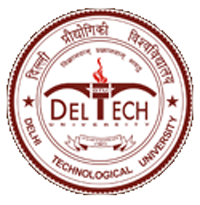Please use this identifier to cite or link to this item:
http://dspace.dtu.ac.in:8080/jspui/handle/repository/22084| Title: | Gasification of municipal solid waste and its impact on environment |
| Authors: | Singh, Raj Kumar |
| Keywords: | Gasification Environmental impact Energy recovery Thermochemical route Landfill reduction Incineration |
| Issue Date: | 2012 |
| Abstract: | Management of municipal solid waste (MSW) is a serious problem, the world over. Presently, landfilling practice is one of the most common ways of MSW disposal in metropolitan cities. In Delhi itself, there are three major dumping grounds for MSW disposal, which are either exhausted or are on the verge of exhaustion. Developing new landfill is not only a difficult task but also a costly affair (as land is a scarce commodity in Delhi), and thereby a lot of importance is being given to find out cost effective and cleaner alternative for MSW disposal problem. High temperature energy recovery from MSW, usually known as Waste-To-Energy (WTE), is a promising technology for energy recovery, landfill materials reduction, preventing air and water contamination, safe waste disposal, improves recycling rate and lessens the dependence on fossil fuel. Gasification technology via thermochemical route is a kind of WTE technology. For gasification, even a pre-treated MSW or refuse derived fuel (RDF) is a problematic fuel (with low calorific value, high moisture and ash content compounded with unfavourable ash behaviour). Utilization of such feedstock in conventional fixed bed gasification systems poses additional challenges, whereas, MSW is seen as potential alternative solid fuel to the woody biomass. Moreover, from the past unfavorable experiences of MSW based thermal treatment (incinerator) plant at Timarpur in Delhi, a careful and comprehensive solid waste analysis is essential for making correct choice and successfulness of WTE technologies. This work, therefore, focuses on characterization of physical, chemical and thermal properties of MSW/RDF received from three major landfill sites in Delhi namely Bhalaswa, Gazipur and Okhla. The aim of this study is to perform a thorough waste characterization (influence of season and location on MSW composition) of MSW in Delhi. The tests were performed to classify the raw MSW and to investigate physical and chemical composition of MSW, RDF and residual ash. It is revealed that organic component is relatively high, fuel and inert components are around 24% each, and recyclables are very low in Delhi waste. The processing or pretreatment of raw MSW is necessary before utilization in WTE technologies. Furthermore, experiments were performed on 10 kWe downdraft biomass gasifier using a mixture of RDF pellets and wood biomass of desired size in proportion of 1:1. The 10 kW converted engine (single fuel mode) with an electric generator, coupled with the gasifier, was used to produce electric power. Exhaust emissions from gasifier-engine system and pollutants in re-circulated spray water over hot syngas for cooling have been measured as a function electric load. The emissions from engine exhaust are observed to be within the safe emission limits, while level of pollutants in re- circulated water was found to be higher than prescribed limits of Central Pollution Control Board (CPCB) of India. Computational efforts for predicting syngas composition and landfill gas (LFG) emissions are also employed. An equilibrium and kinetic modeling was developed to predict steady state performance of downdraft gasifier in terms of syngas composition. The predictions were compared against experiments for validation. A 2-dimensional numerical model for a 10 kWe downdraft gasifier was also built employing a CFD code Fluent 6.2 followed by Gambit 2.4 (for geometrical treatment) to predict temperature and flow fields in reduction zone, where as the governing equations were solved using inbuilt FDM by assigning appropriate properties of species and solid biomass. The turbulence-chemistry interactions were taken into account by using the eddy dissipation concept (EDC) model together with in-situ adaptive tabulation (ISAT) algorithm to dynamically tabulate the chemistry mapping and to reduce the time of solution. The initial and boundary conditions of the gasifier were applied carefully to verify the distribution of temperature and gas composition at outlet of the reduction zone against measurements. Air pollutants from landfill sites pose adverse impact on the environment. The computations are performed using commercially available software LandGEM to predict LFG emissions for three major landfill sites in Delhi. The policy options proposed in waste management policy were analysed under two possible scenarios first when MSW is continuously dumped at landfill sites till 2020 and in second case if MSW, instead of getting dumped into landfills is utilized in gasifier-engine systems from 2012 onwards to produce electricity. Forecasting for baseline scenario revealed that Delhi will produce 2.134105 Mg/year methane emission in 2021. The treatment capacity enhancement by introducing WTE, for producing 55MW electricity from RDF would reduce methane emission by 368236 Mg in next 20 years. The production of electricity by using WTE technology is expected to replace the fossil fuel. Principal recommendation for utilization of processed MSW in conventional downdraft gasifiers is thorough characterization, processing raw MSW for enriching energy density (like RDF), careful apportionment of RDF and woody biomass feedstock, specific selection of gasifier design configuration and matching of thermal system response; such coupled gasifier-engine- systems for power production application can be seen as feasible solution for depleting resources of fossil fuel along with MSW disposal problem and degrading environment leading to climate change. |
| URI: | http://dspace.dtu.ac.in:8080/jspui/handle/repository/22084 |
| Appears in Collections: | Ph D Thesis |
Files in This Item:
| File | Description | Size | Format | |
|---|---|---|---|---|
| Gasification of municipal solid waste and its impact on environment.pdf | 6.77 MB | Adobe PDF | View/Open |
Items in DSpace are protected by copyright, with all rights reserved, unless otherwise indicated.



